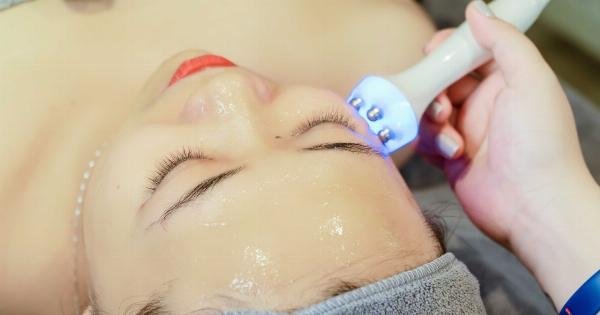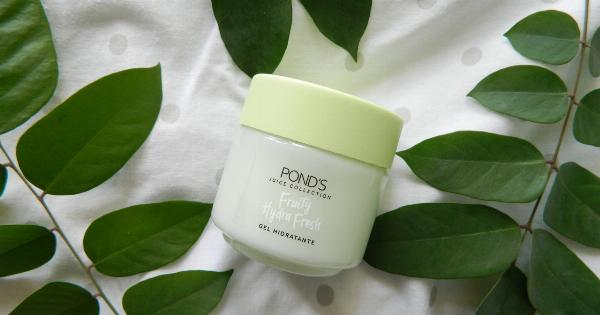Facial exfoliation is a skincare technique that involves removing dead skin cells from the surface of the face.
It is an essential step in any skincare routine as it helps to reveal fresh, radiant skin and prevents clogged pores, breakouts, and dullness.
Benefits of Facial Exfoliation
Regular facial exfoliation offers numerous benefits to the skin. Some of the key advantages include:.
- Improved Texture: Exfoliation helps to smooth out rough skin texture and promotes a more even complexion.
- Enhanced Absorption: By removing the dead skin layer, exfoliation allows skincare products to penetrate deeper into the skin, maximizing their effectiveness.
- Unclogged Pores: Exfoliation helps to remove dirt, oil, and debris from pores, reducing the risk of breakouts and blackheads.
- Brightened Complexion: Regular exfoliation eliminates the buildup of dead skin cells, revealing a brighter and more youthful-looking complexion.
- Stimulated Circulation: The massaging action of exfoliation boosts blood flow to the face, resulting in a healthy glow.
Types of Facial Exfoliation
There are several methods of facial exfoliation available, including:.
1. Physical Exfoliation
This type of exfoliation involves using physical scrubs or tools to manually slough off dead skin cells. Common physical exfoliants include facial scrubs, brushes, and exfoliating gloves.
2. Chemical Exfoliation
Chemical exfoliation involves the use of acids or enzymes to dissolve dead skin cells. This method is typically gentler on the skin and offers effective exfoliation without the need for rubbing or scrubbing.
Common chemical exfoliants include alpha-hydroxy acids (AHA), beta-hydroxy acids (BHA), and fruit enzymes.
Tips for Facial Exfoliation
Mastering the art of facial exfoliation requires the right technique and knowledge. Follow these tips to achieve optimal results:.
1. Choose the Right Exfoliant for Your Skin Type
Not all exfoliants are suitable for every skin type. For sensitive or dry skin, opt for a gentle exfoliant with smaller particles or a chemical exfoliant with mild acids.
For oily or acne-prone skin, consider exfoliants with BHA or AHA to help unclog pores and control sebum production.
2. Frequency is Key
Exfoliating too often can strip away the skin’s natural oils and cause irritation. On the other hand, not exfoliating enough can lead to a buildup of dead skin cells.
As a general rule, exfoliate 1-2 times a week for normal to dry skin, and 2-3 times a week for oilier skin types.
3. Prep Your Skin
Prior to exfoliation, it’s essential to cleanse your face thoroughly to remove any makeup, dirt, or oil. This allows the exfoliant to work more effectively and prevents any impurities from being pushed further into the skin.
4. Be Gentle
When exfoliating, avoid applying excessive pressure or scrubbing vigorously, especially if using a physical exfoliant. Over-exfoliating can damage the skin’s barrier and lead to inflammation.
Use gentle, circular motions and let the exfoliant do the work.
5. Pay Attention to Problem Areas
Focus on exfoliating areas prone to congestion, such as the T-zone (forehead, nose, and chin). Be cautious around sensitive areas like the under-eye region and any active breakouts to avoid irritation.
6. Follow with Hydration
After exfoliation, it’s crucial to hydrate and nourish the skin. Apply a moisturizer or a hydrating serum to replenish moisture and protect the freshly exfoliated skin barrier.
7. Skip Exfoliation on Irritated or Broken Skin
Avoid exfoliating if you have active acne, sunburn, cuts, or any other skin condition that causes irritation or redness. Exfoliating these areas can worsen the inflammation and delay the healing process.
8. Gradually Increase Potency
If you are new to exfoliation or introducing a stronger exfoliant into your routine, start with a lower concentration and gradually increase over time. This helps the skin adjust and minimizes the risk of irritation.
9. Listen to Your Skin
Everyone’s skin is unique, and what works for one person may not work for another. Pay attention to your skin’s response to exfoliation and adjust your routine accordingly.
If you notice excessive dryness, redness, or irritation, reduce the frequency or potency of your exfoliant.
10. Seek Professional Advice
If you are unsure about which exfoliation method or product is best for your skin, consult a dermatologist or skincare professional. They can assess your skin type and recommend suitable exfoliants tailored to your specific needs.




























